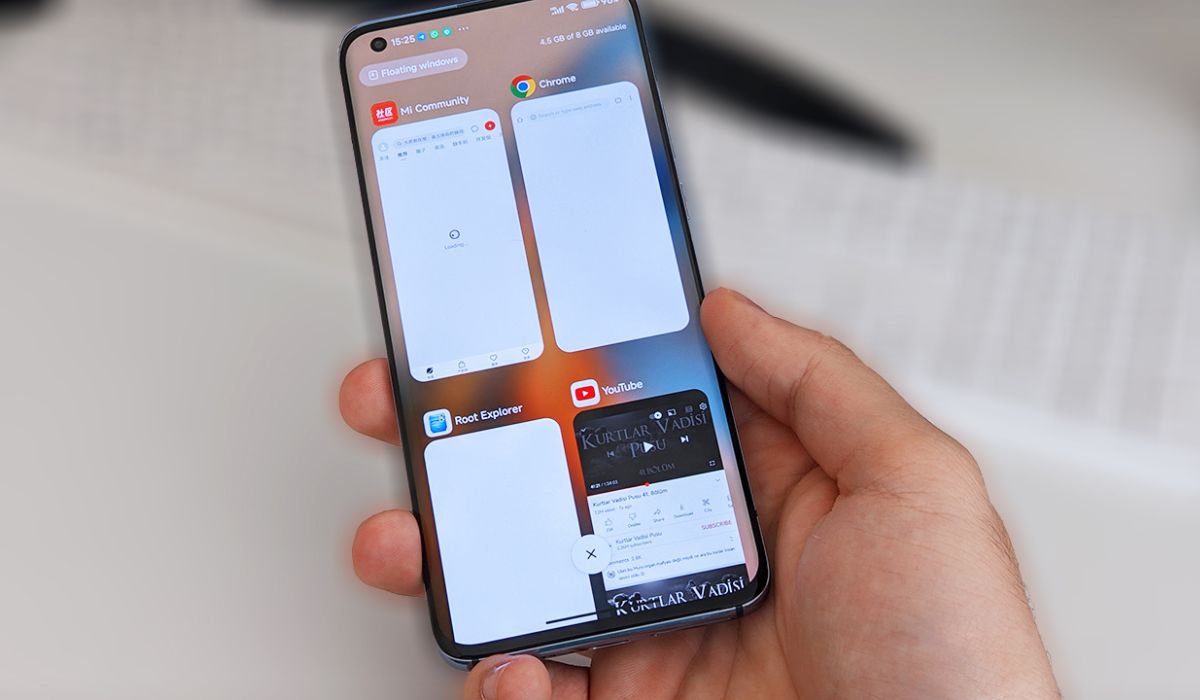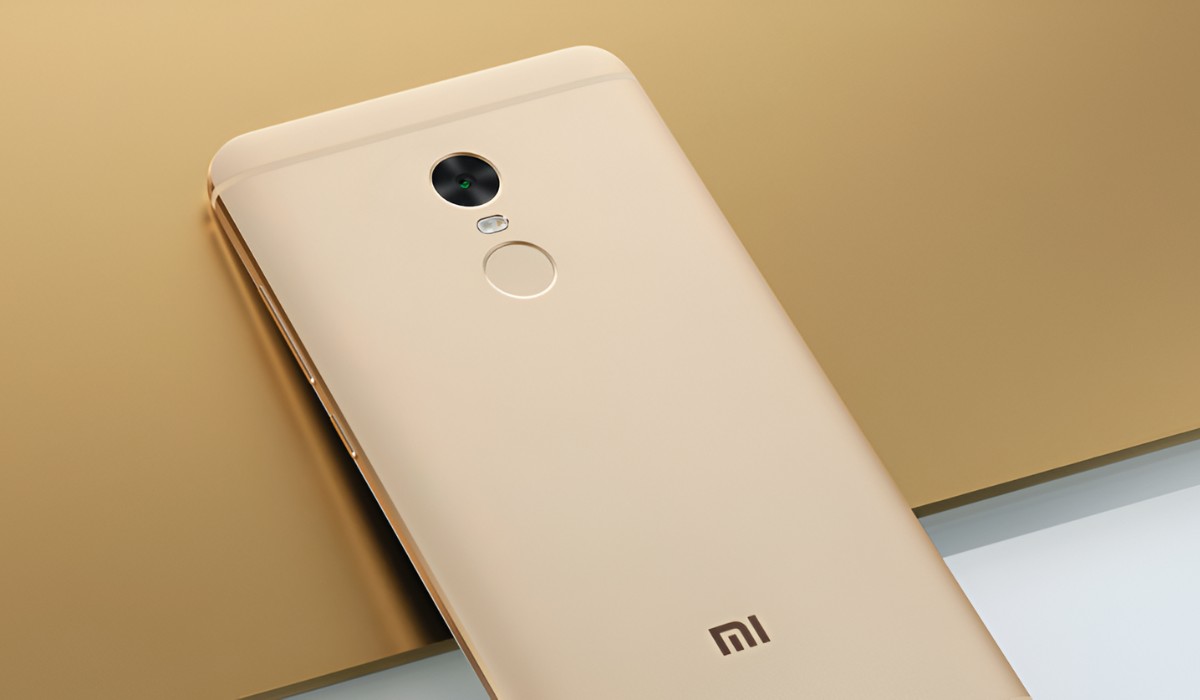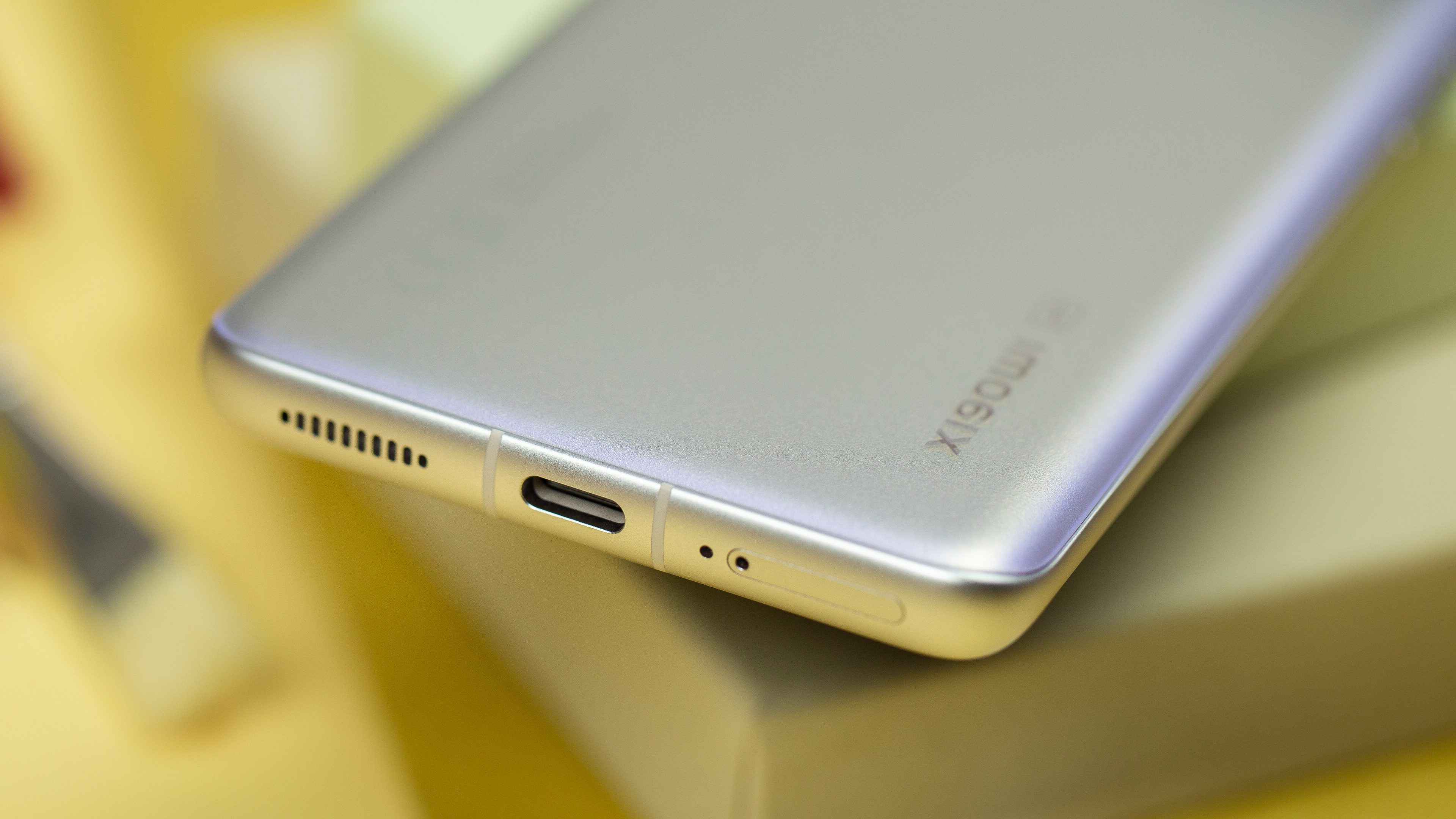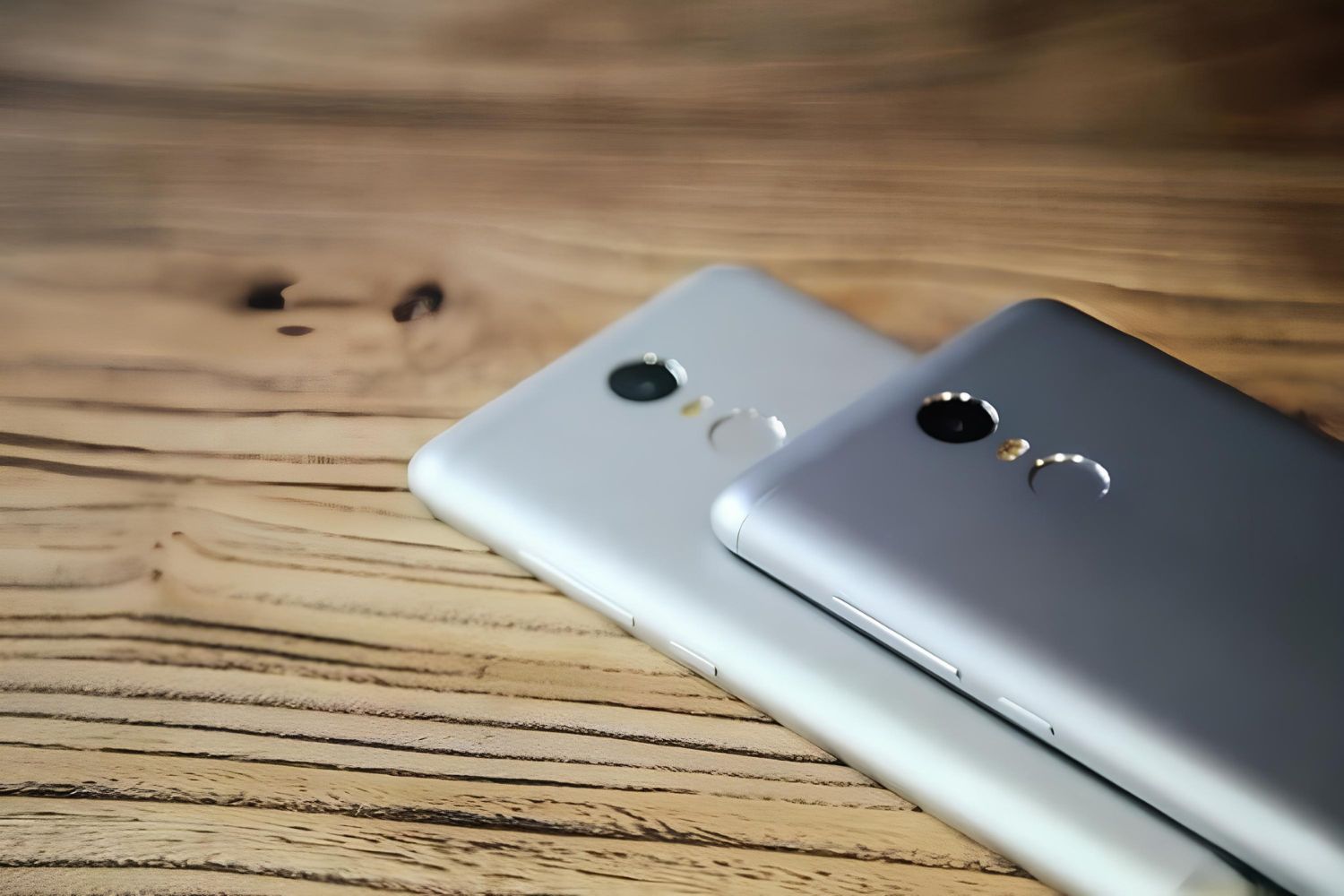Introduction
In today's digital age, our smartphones have become indispensable tools, seamlessly integrating into our daily lives. Xiaomi devices, known for their innovative features and user-friendly interface, have gained immense popularity among tech-savvy individuals. However, as we rely more on our smartphones for various tasks, managing storage space becomes a crucial aspect of ensuring optimal performance.
Storage management is a fundamental practice that directly impacts the functionality and efficiency of Xiaomi devices. With the accumulation of apps, media files, and system data, it's common for the storage space to become cluttered, leading to sluggish performance and limited space for new content. Therefore, understanding how to effectively manage storage and clear unnecessary files is essential for maintaining a seamless user experience.
In this comprehensive guide, we will delve into the intricacies of storage management on Xiaomi devices, providing valuable insights into identifying and clearing unnecessary files. From cache and temporary files to media downloads, we will explore the various aspects of storage optimization, empowering Xiaomi users to streamline their devices for enhanced performance and efficiency.
By implementing the strategies outlined in this guide, Xiaomi users can reclaim valuable storage space, optimize system performance, and ensure a smooth and uninterrupted user experience. Let's embark on this journey to unlock the full potential of your Xiaomi device by mastering the art of storage management.
Understanding Storage Usage on Xiaomi Devices
Understanding the intricacies of storage usage on Xiaomi devices is the first step towards efficient storage management. Xiaomi smartphones, renowned for their advanced features and expansive storage capacities, offer users a versatile platform for storing a myriad of content, including apps, media files, and system data. However, comprehending how this storage space is utilized is crucial for optimizing device performance and ensuring a seamless user experience.
The storage on Xiaomi devices is divided into distinct categories, each serving a specific purpose in the overall functionality of the device. These categories include system storage, app data, media files, cached data, and miscellaneous files. System storage encompasses the core operating system and essential system files, while app data comprises the data generated and stored by installed applications. Media files encompass photos, videos, music, and other user-generated content, constituting a significant portion of the storage space. Cached data, on the other hand, consists of temporary files and app data that are stored to expedite the loading of frequently accessed content.
By gaining a comprehensive understanding of these storage categories, users can effectively assess their storage usage patterns and identify areas where unnecessary files may be accumulating. This insight enables users to make informed decisions when it comes to clearing out redundant files and optimizing storage space. Furthermore, understanding the distribution of storage usage empowers users to prioritize the management of specific file types based on their individual storage requirements and usage patterns.
In essence, comprehending storage usage on Xiaomi devices provides users with the knowledge needed to make informed decisions regarding storage management. By gaining insights into the distribution of storage across various categories, users can proactively address storage-related issues, optimize device performance, and ensure that their Xiaomi device operates at its full potential.
Understanding storage usage on Xiaomi devices serves as the foundation for implementing effective storage management strategies, enabling users to maintain an organized and efficient storage environment. With this knowledge in hand, users can proceed to identify and clear unnecessary files, thereby reclaiming valuable storage space and enhancing the overall performance of their Xiaomi devices.
Identifying Unnecessary Files
Identifying unnecessary files is a pivotal step in the process of storage management on Xiaomi devices. By discerning which files are no longer essential or relevant to the user's current needs, individuals can effectively declutter their device's storage space and optimize its performance. Here are the key areas to focus on when identifying unnecessary files:
1. Cached Data:
Cached data, comprising temporary files and app data stored for quick access, often accumulates over time and can consume a significant portion of the device's storage. While cached data serves the purpose of expediting the loading of frequently accessed content, it can become bloated with redundant files. Users should assess the cached data of individual apps and clear out unnecessary files to free up storage space.
2. Redundant Downloads:
Over time, users may accumulate a multitude of downloaded files, including documents, images, and miscellaneous content. Reviewing the Downloads folder and removing files that are no longer needed can yield substantial storage savings. This includes clearing out outdated documents, duplicate files, and media downloads that have served their purpose.
3. Unutilized Applications:
Installed applications often contribute to the accumulation of unnecessary files, especially if they generate large amounts of app data or cache. Users should evaluate their installed apps and identify those that are no longer used or essential. Uninstalling redundant apps not only frees up storage space but also streamlines the device's interface, enhancing overall usability.
4. Obsolete Media Files:
Photos, videos, and audio files that are no longer relevant or needed can occupy a considerable amount of storage space. Users should review their media libraries and identify files that can be safely deleted or transferred to external storage. This includes blurry or duplicate photos, outdated videos, and audio recordings that have fulfilled their purpose.
5. Miscellaneous Files:
The Miscellaneous Files category often encompasses a diverse range of content, including residual files from app installations, system logs, and temporary files. Users should delve into this category to identify and remove unnecessary files that may have accumulated over time, contributing to storage bloat.
By meticulously evaluating these key areas, users can effectively identify unnecessary files and declutter their Xiaomi device's storage space. This proactive approach not only optimizes storage utilization but also enhances the device's performance and responsiveness. With a clear understanding of the types of files that can be deemed unnecessary, users can proceed to implement targeted strategies for clearing out redundant data and reclaiming valuable storage space.
Clearing Cache and Temporary Files
Clearing cache and temporary files is a fundamental aspect of storage management on Xiaomi devices. Cached data, comprising temporary files and app data stored for quick access, plays a crucial role in enhancing the performance and responsiveness of applications. However, over time, cached data can accumulate and contribute to storage bloat, potentially impacting the device's overall efficiency. Therefore, implementing a systematic approach to clearing cache and temporary files is essential for optimizing storage space and ensuring seamless device operation.
Built-in Cache Clearing:
Xiaomi devices offer built-in tools that enable users to clear cached data from individual applications. By navigating to the device's settings and accessing the "Storage" or "Apps" section, users can view a list of installed applications along with their respective cached data sizes. From here, users can selectively clear the cached data of specific apps, freeing up storage space and potentially resolving performance issues related to bloated cache.
Utilizing System Maintenance Tools:
Xiaomi devices are equipped with system maintenance tools that facilitate the optimization of storage space. These tools often include features such as "Storage Cleaner" or "Device Maintenance," which enable users to perform comprehensive scans for unnecessary files, including cached data and temporary files. By leveraging these built-in tools, users can efficiently identify and clear out redundant data, thereby streamlining storage utilization and enhancing the device's overall performance.
Third-Party Cache Cleaning Apps:
In addition to built-in tools, users can explore third-party cache cleaning apps available on the Google Play Store. These apps offer advanced features for clearing cached data, temporary files, and residual app data, providing users with a more extensive range of options for optimizing storage space. However, it is essential to exercise caution and select reputable apps from trusted developers to ensure the security and integrity of the device's data.
By proactively clearing cache and temporary files, Xiaomi users can effectively mitigate storage bloat and optimize their device's performance. This proactive approach not only enhances the device's responsiveness but also contributes to a streamlined and efficient storage environment. With the ability to selectively clear cached data and temporary files, users can reclaim valuable storage space, ensuring that their Xiaomi device operates at its full potential.
In summary, clearing cache and temporary files is a pivotal step in the storage management process, enabling users to maintain an organized and efficient storage environment. By leveraging built-in tools and exploring third-party solutions, Xiaomi users can effectively declutter their device's storage space, optimizing performance and ensuring a seamless user experience.
Managing Downloads and Media Files
Managing downloads and media files is a crucial aspect of storage management on Xiaomi devices, as these files often constitute a significant portion of the device's storage space. Over time, users may accumulate a multitude of downloaded files, including documents, images, videos, and miscellaneous content. Additionally, media files such as photos, videos, and audio recordings contribute to the overall storage utilization. Effectively managing these files is essential for optimizing storage space and ensuring a seamless user experience.
Organizing Downloads:
Reviewing the Downloads folder is the first step in managing downloaded files. Users should assess the contents of this folder, identifying files that are no longer needed or relevant to their current requirements. This includes clearing out outdated documents, duplicate files, and miscellaneous downloads that have served their purpose. By organizing the Downloads folder, users can reclaim valuable storage space and streamline their file management system.
Media File Cleanup:
Media files, including photos, videos, and audio recordings, often occupy a substantial amount of storage space. Users should meticulously review their media libraries, identifying files that are no longer essential or relevant. This includes blurry or duplicate photos, outdated videos, and audio recordings that have fulfilled their purpose. By decluttering their media files, users can free up significant storage space while ensuring that their media library remains organized and easily accessible.
Utilizing Cloud Storage:
For users with extensive media collections, leveraging cloud storage solutions can be an effective strategy for managing media files. By uploading photos, videos, and other media content to cloud storage platforms, users can offload these files from their device's internal storage, creating additional space for new content. Cloud storage also offers the advantage of seamless accessibility across devices, ensuring that users can access their media files anytime, anywhere.
Transferring to External Storage:
For users with Xiaomi devices that support expandable storage via microSD cards, transferring media files to external storage presents an efficient solution for managing storage space. By offloading media files to a microSD card, users can alleviate the burden on their device's internal storage, creating room for new downloads and content. This approach is particularly beneficial for users with extensive media collections or those who frequently capture high-resolution photos and videos.
By implementing these strategies for managing downloads and media files, Xiaomi users can effectively optimize their device's storage space, ensuring that essential content remains easily accessible while unnecessary files are cleared out. This proactive approach not only streamlines storage utilization but also contributes to a seamless and efficient user experience.
In summary, managing downloads and media files is a fundamental aspect of storage management on Xiaomi devices, enabling users to maintain an organized and efficient storage environment. By organizing downloads, decluttering media files, leveraging cloud storage, and utilizing external storage options, users can effectively optimize their device's storage space, ensuring optimal performance and usability.
Utilizing Built-in Storage Management Tools
Xiaomi devices are equipped with a range of built-in storage management tools that empower users to efficiently optimize their device's storage space. These tools are designed to provide users with comprehensive insights into their storage utilization and offer intuitive features for clearing unnecessary files, streamlining storage organization, and enhancing overall device performance.
One of the key built-in storage management tools available on Xiaomi devices is the "Storage" section within the device's settings. This feature provides users with a detailed breakdown of their storage usage, categorizing data into distinct segments such as system storage, app data, media files, cached data, and miscellaneous files. By accessing this section, users can gain valuable insights into their storage consumption patterns, enabling them to identify areas where unnecessary files may be accumulating.
Within the "Storage" section, users can also explore the "Cached Data" feature, which allows for the selective clearing of cached data from individual applications. This granular control over cached data enables users to free up storage space by removing redundant temporary files and app data, thereby optimizing the device's performance and responsiveness.
Furthermore, Xiaomi devices often include system maintenance tools that incorporate storage cleaning functionalities. These tools, commonly found within the device's settings or system management interface, enable users to perform comprehensive scans for unnecessary files, including cached data, temporary files, residual app data, and other miscellaneous files. By leveraging these built-in storage cleaning tools, users can efficiently identify and clear out redundant data, ensuring that their device's storage space is streamlined and optimized.
In addition to storage cleaning features, Xiaomi devices may offer storage optimization recommendations based on usage patterns and storage consumption. These recommendations may include suggestions for clearing out large or unused files, managing app data, and organizing media content. By following these recommendations, users can proactively address storage-related issues and ensure that their device operates at its full potential.
Overall, the built-in storage management tools on Xiaomi devices provide users with the means to gain insights into their storage usage, selectively clear cached data, perform comprehensive storage scans, and receive optimization recommendations. By leveraging these intuitive features, users can effectively declutter their device's storage space, optimize performance, and maintain a seamless and efficient user experience.
Using Third-Party Storage Cleaning Apps
In addition to the built-in storage management tools provided by Xiaomi devices, users can explore the option of utilizing third-party storage cleaning apps to further optimize their device's storage space. These apps offer advanced features and functionalities designed to comprehensively scan for unnecessary files, clear cached data, and declutter the device's storage environment.
Third-party storage cleaning apps available on the Google Play Store present users with a diverse range of options for effectively managing their device's storage space. These apps often feature intuitive interfaces, making it easy for users to initiate storage scans, review detailed reports on storage utilization, and selectively clear out redundant files.
One of the key advantages of third-party storage cleaning apps is their ability to perform in-depth scans across various storage categories, including cached data, temporary files, residual app data, and miscellaneous files. By conducting thorough scans, these apps enable users to identify and remove unnecessary files that may have accumulated over time, contributing to storage bloat and impacting the device's performance.
Furthermore, third-party storage cleaning apps often offer additional features such as app management, file organization, and storage optimization recommendations. Users can benefit from functionalities that allow for the efficient management of installed apps, the organization of media files, and actionable insights into storage consumption patterns.
It is essential for users to exercise caution and select reputable third-party storage cleaning apps from trusted developers to ensure the security and integrity of their device's data. By choosing well-established apps with positive user reviews and a track record of reliability, users can confidently leverage the advanced capabilities offered by these third-party solutions.
In summary, third-party storage cleaning apps serve as valuable complements to the built-in storage management tools provided by Xiaomi devices. By utilizing these apps, users can gain access to advanced features for comprehensive storage scans, selective file clearing, and optimization recommendations, empowering them to maintain an organized and efficient storage environment.
Overall, the integration of third-party storage cleaning apps into the storage management strategy for Xiaomi devices enables users to proactively address storage-related issues, optimize performance, and ensure a seamless and efficient user experience.
Conclusion
In conclusion, effective storage management is a fundamental practice for Xiaomi device users seeking to optimize performance, streamline storage utilization, and ensure a seamless user experience. By gaining a comprehensive understanding of storage usage and implementing targeted strategies for identifying and clearing unnecessary files, users can reclaim valuable storage space and maintain an organized storage environment.
The process of storage management encompasses various key aspects, including clearing cache and temporary files, managing downloads and media files, utilizing built-in storage management tools, and exploring third-party storage cleaning apps. By proactively addressing these areas, Xiaomi users can optimize their device's storage space, ensuring that essential content remains easily accessible while unnecessary files are cleared out.
Furthermore, the built-in storage management tools provided by Xiaomi devices offer users intuitive features for gaining insights into storage usage, selectively clearing cached data, performing comprehensive storage scans, and receiving optimization recommendations. These tools empower users to take proactive measures in optimizing their device's storage space and maintaining efficient performance.
Additionally, the integration of third-party storage cleaning apps presents users with advanced capabilities for conducting in-depth storage scans, selectively clearing redundant files, and receiving optimization recommendations. By leveraging these third-party solutions, users can further enhance their storage management efforts, ensuring that their Xiaomi device operates at its full potential.
Overall, the journey to mastering the art of storage management on Xiaomi devices is a proactive and empowering endeavor. By implementing the strategies outlined in this guide, users can reclaim valuable storage space, optimize performance, and ensure a seamless and uninterrupted user experience. With a clear understanding of storage usage and the tools at their disposal, Xiaomi users can embark on a path towards efficient storage management, unlocking the full potential of their devices and maintaining a clutter-free and organized storage environment.

























